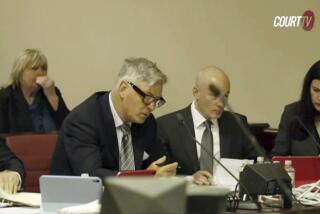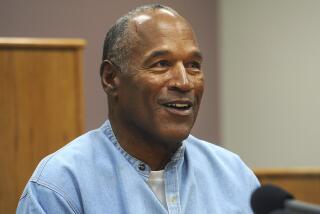Finding a Jury
- Share via
The right to a trial by a jury of one’s peers is one of the cornerstones of American justice. It is guaranteed in the 6th Amendment, which entitles a defendant to a speedy and public trial by impartial jury in the jurisdiction where the crime was committed. In the O.J.Simpson case, it is complicated by the publicity surrounding the trial, the length of the trial and the possibility that jurors will be sequestered.
Where They Come From Although jurors are selected at random from throughout the county to serve in Superior Court, the Office of the Jury Commissioner tries to assign jurors from within a 20-mile radius of a court. Although it s possible for someone living in an outlying district such as the North District-which includes Palmdale and Lancaster-to serve in the Central District Downtown, it is unlikely. This policy also serves to create a jury pool that is more representative, racially and economically, of the court district in which the trial is held.
How It Works A. In Los Angeles County, the Office of the Jury Commissioner compiles a jury list from voter registration and Department of Motor Vehicle records. In 1993, there were 4 million names on the list. B. Based on projections of the courts’ needs, summons are sent to randomly selected names from this pool. In Los Angeles County, about 400,000 to 500,000 people are called each year. C. The first stage of jury selection in the O.J.Simpson case, to screen out those people who could not serve because of personal or financial hardship, concluded Sept. 29 with the selection of 304 jury candidates. D. Prospective jurors who were not excused for hardship filled out a detailed, 79-page questionnaire. The 294 questions focus on jurors personal beliefs, their attitudes and exposure to the case. Judge Lance A. Ito, the lawyers and jury consultants being used by the prosecution and defense have been reviewing the completed questionnaires. E. The first group of potential jurors will return to court today for voir dire, oral questioning to determine their suitability to serve. Under a law designed to speed up court proceedings, Ito will do most of the questioning, but will also allow attorneys to question jurors.
F. The prosecution and defense each are allowed to excuse a number of prospective jurors without having to give reasons. They can also challenge and dismiss an unlimited number of jurors “for cause” with the judge’s approval. G. No television coverage is being allowed during jury selection. Throughout this phase of jury selection a closed-circuit audio feed will pipe some of the proceedings to a courthouse pressroom, but the feed cannot be broadcast. H. Ultimately, 12 jurors and 8 alternates will be selected for the Simpson trial.
What’s Ahead * Evidence Hearing: The judge has indicated he will hold a hearing on the admissibility of DNAevidence on Nov. 1. Prospective jurors will not be in the courtroom during this hearing Opening statements are expected to begin after the DNA hearing, possibly by mid-November. * Sequestration: The prosecution has asked Judge Ito to sequester the jury for the duration of the trial. The defense opposes this measure. Ito can choose to sequester the jury for the entire trial, during deliberations only or not sequester them at all. Sources: Los Angeles County Office the Jury Commissioner, Guide to American Law, Times staff and wire reports
Researched by NONA YATES / Los Angeles Times


